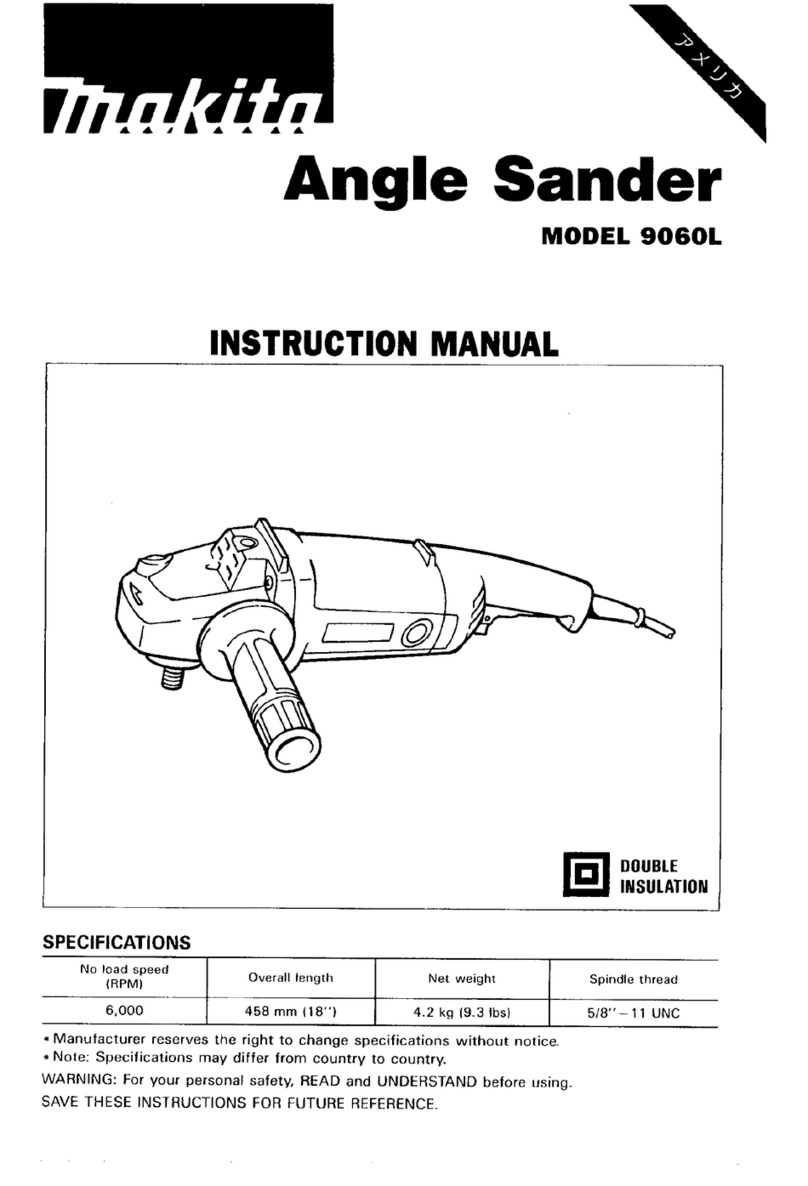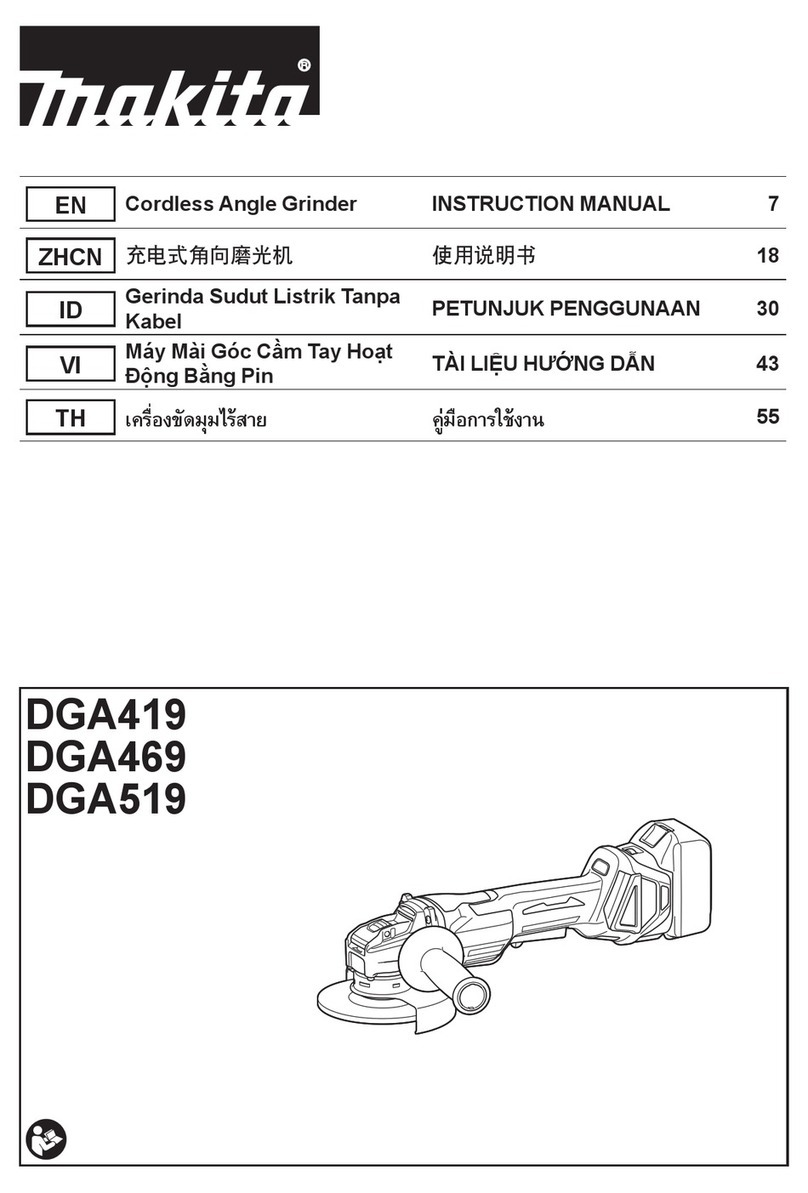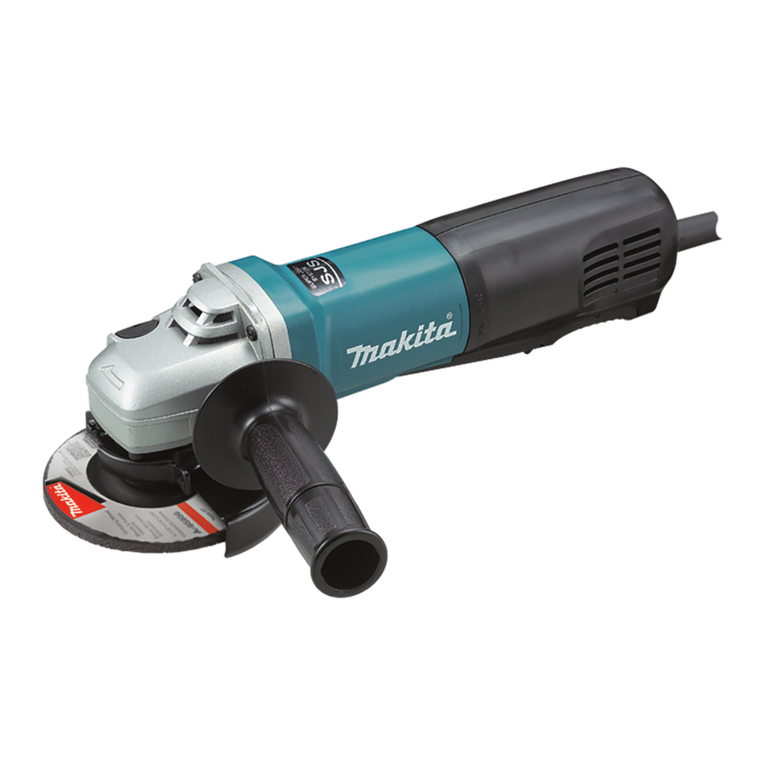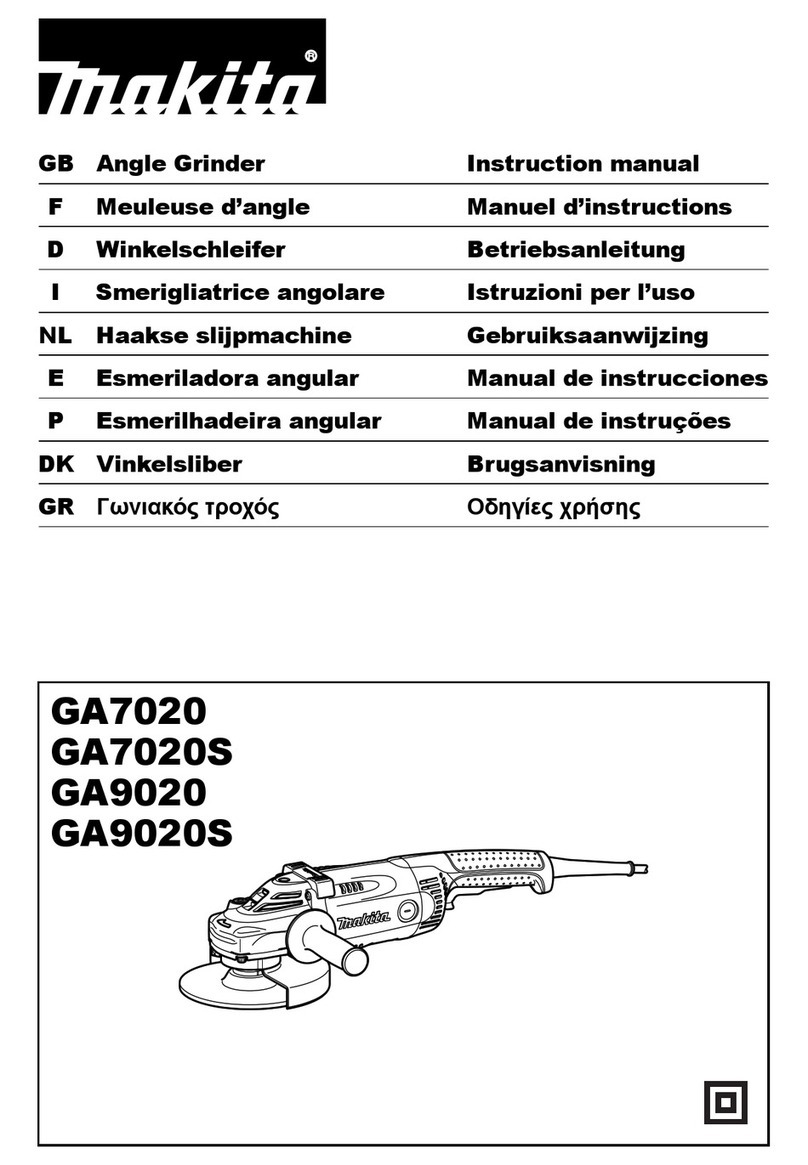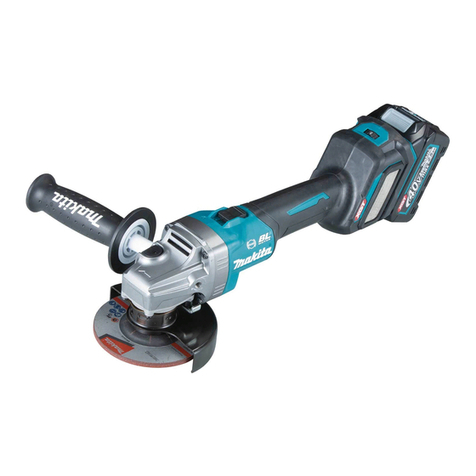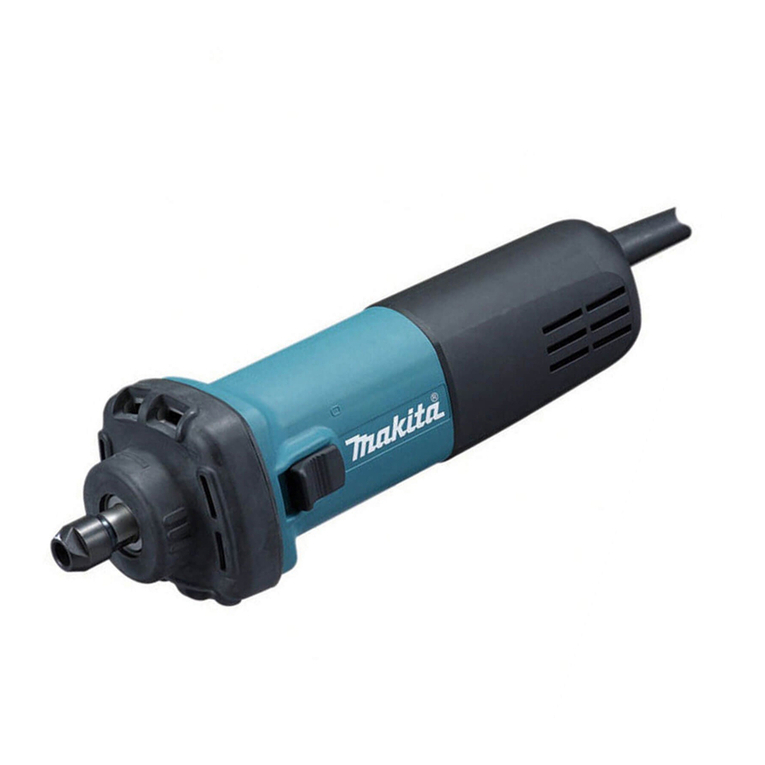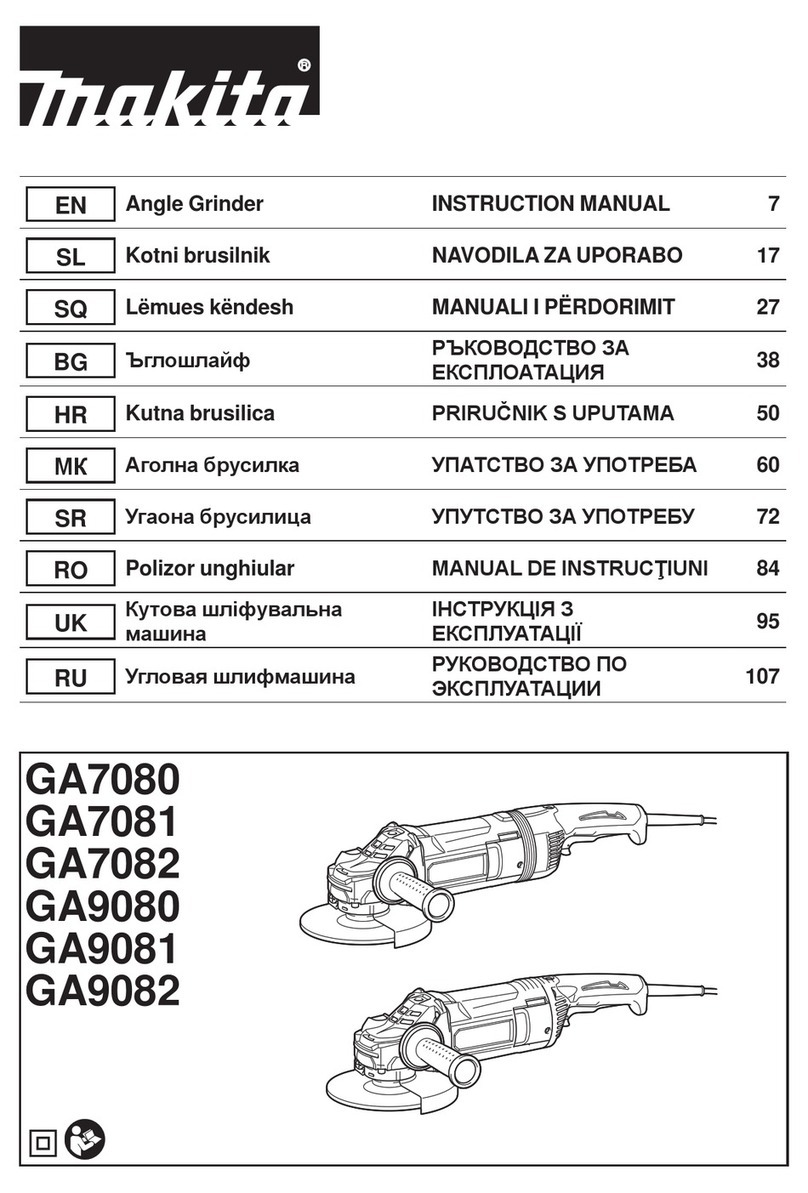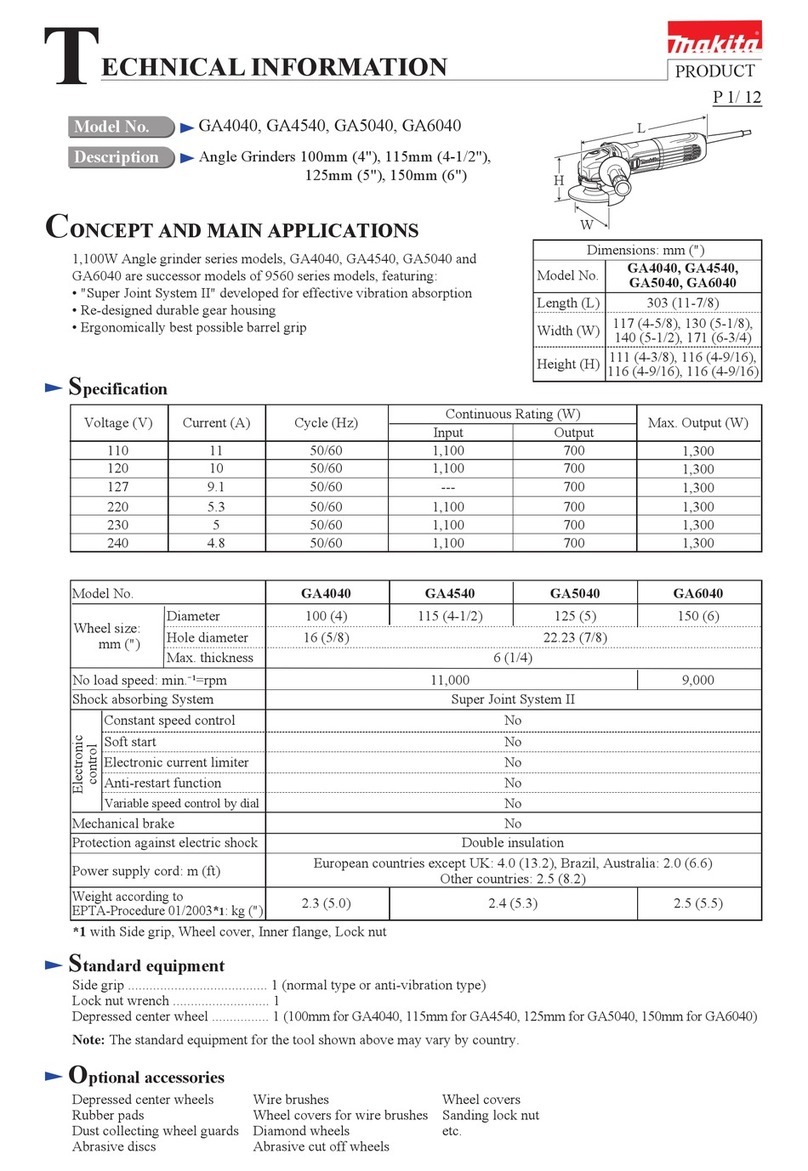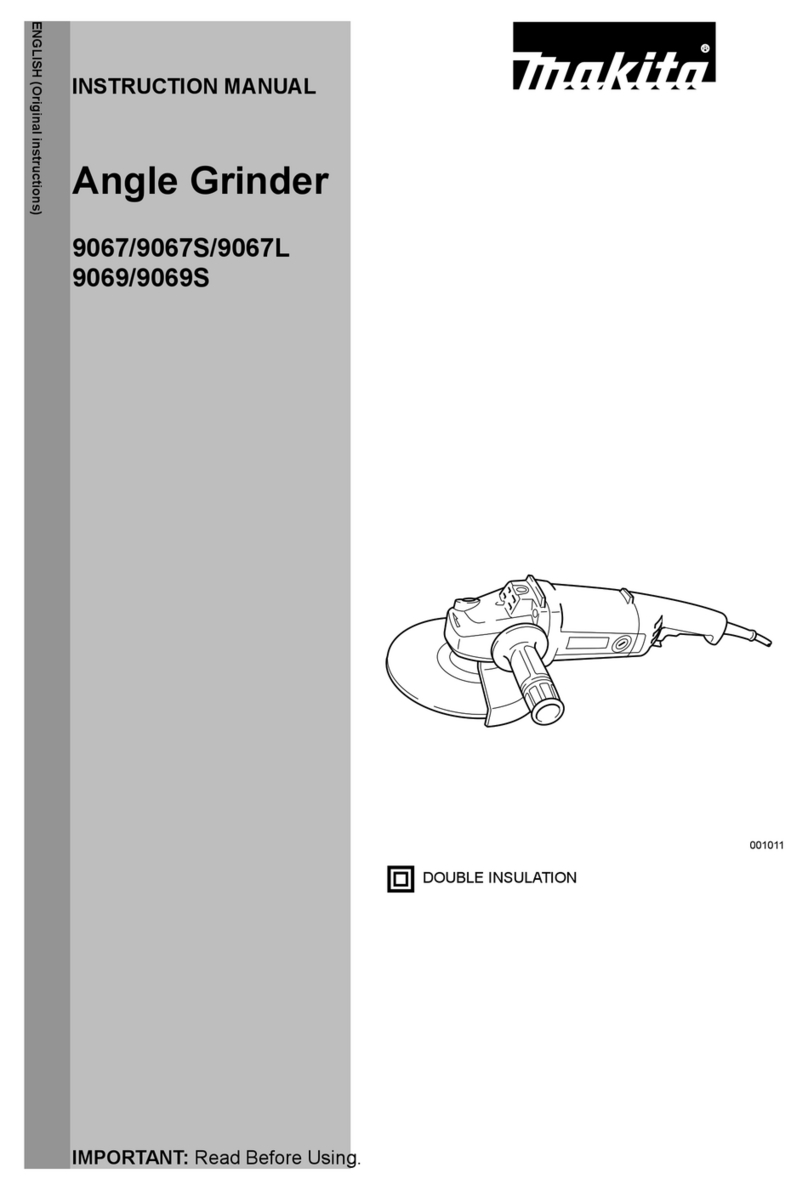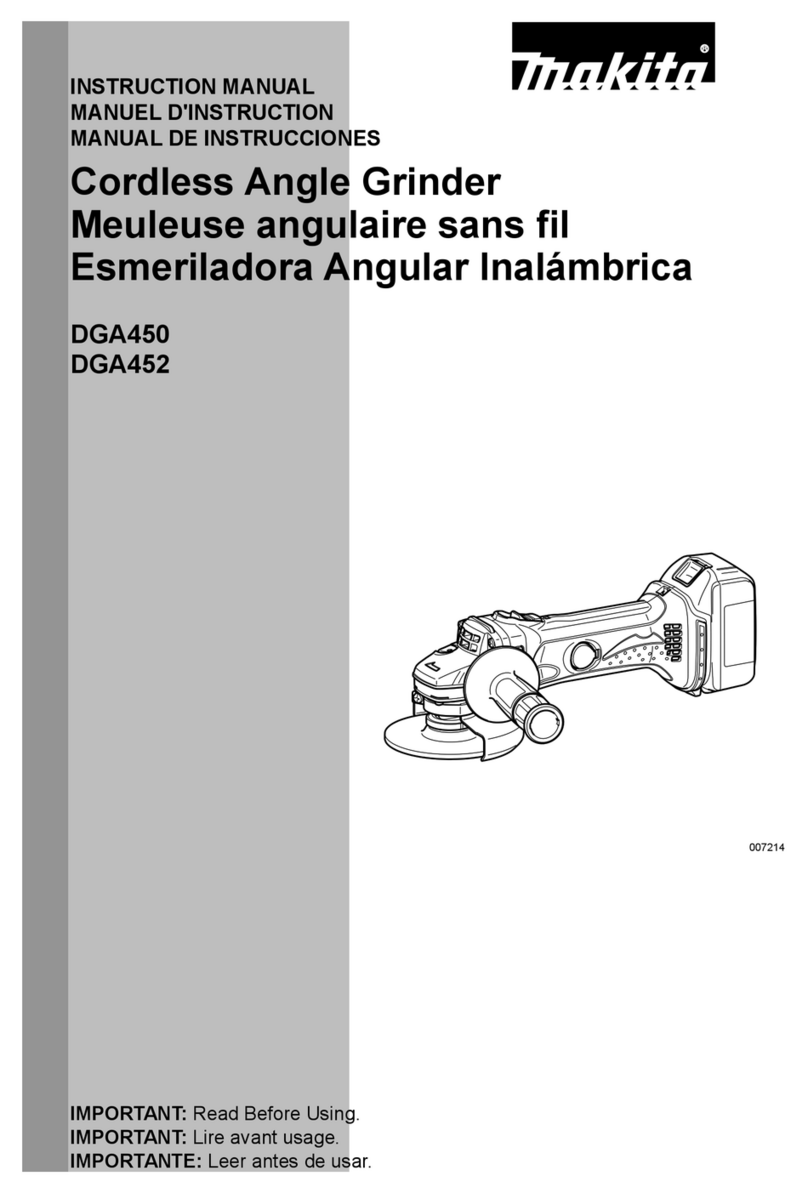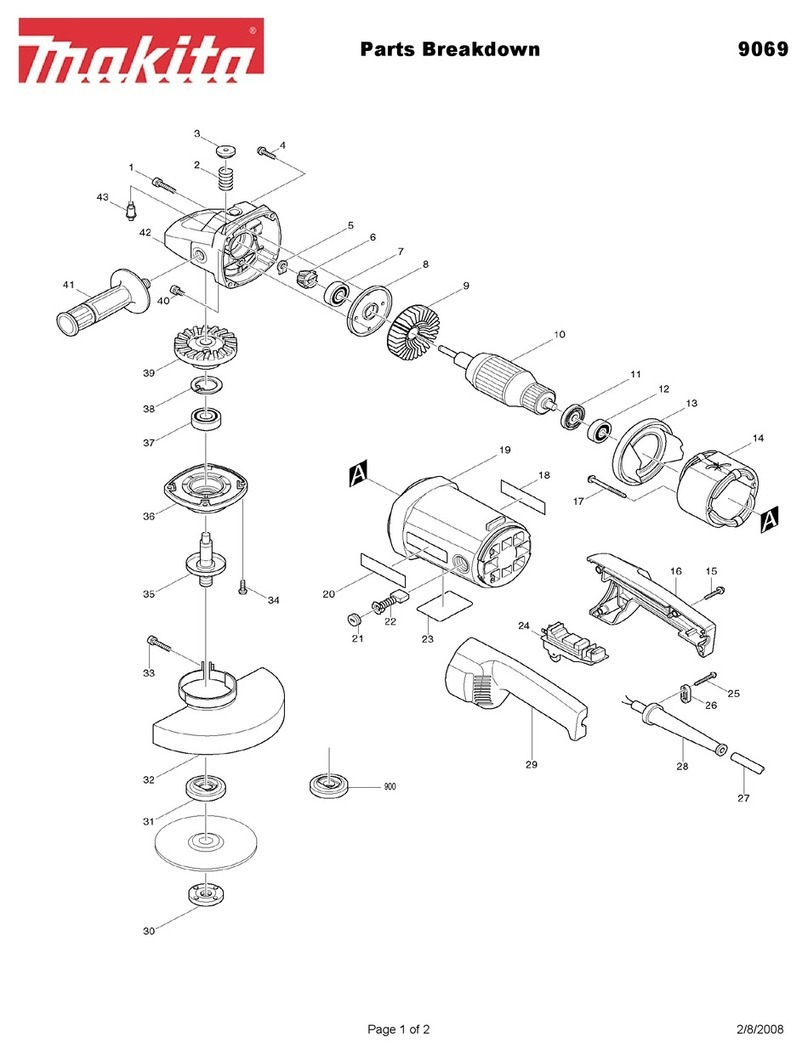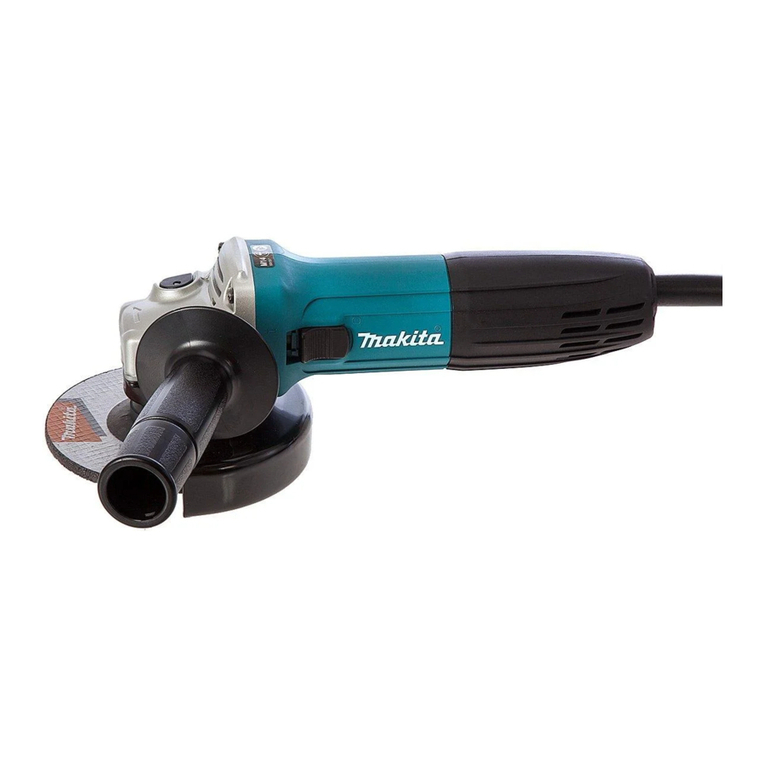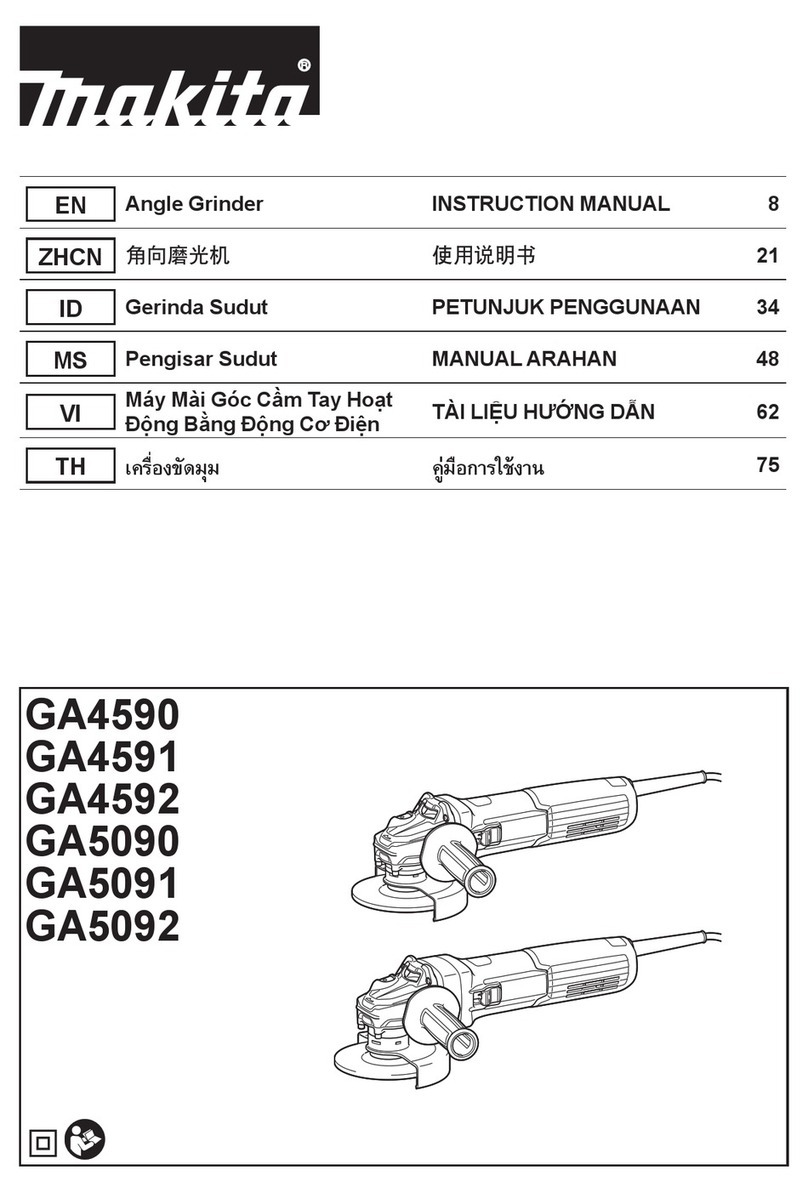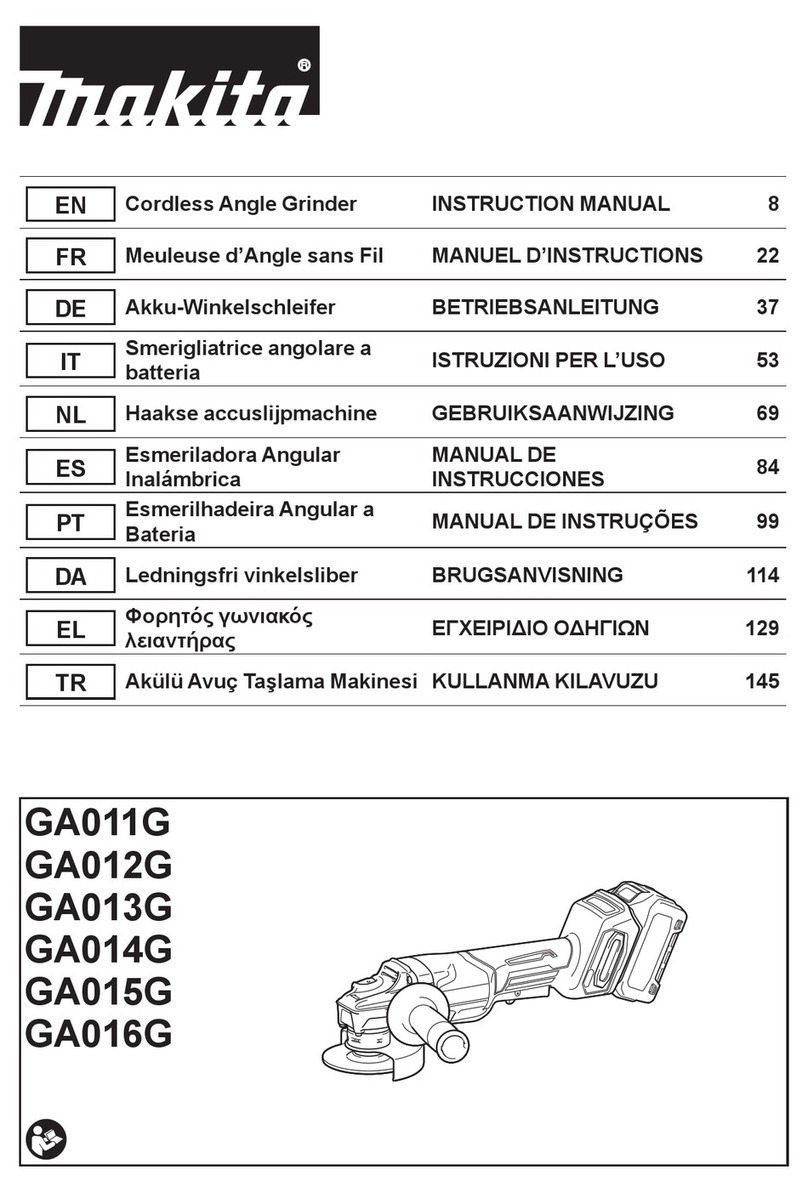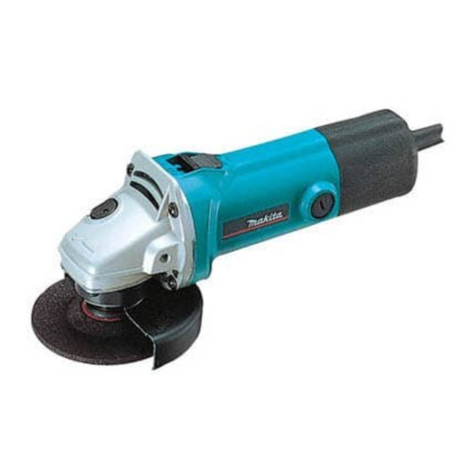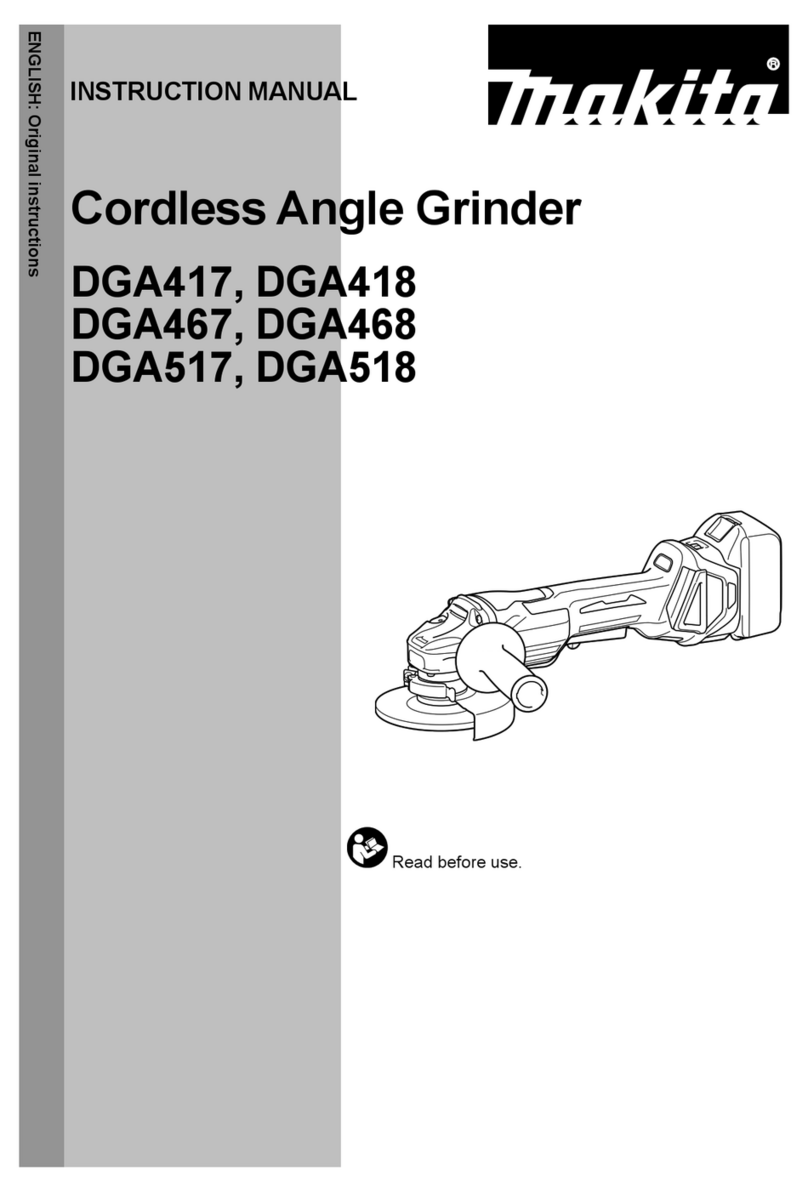
10 ENGLISH
Model GA038G
Work mode: surface grinding with normal side grip
Vibration emission (ah, AG) : 7.0 m/s2
Uncertainty (K) : 1.5 m/s2
Work mode: surface grinding with anti vibration side grip
Vibration emission (ah, AG) : 7.5 m/s2
Uncertainty (K) : 1.5 m/s2
Work mode: disc sanding with normal side grip
Vibration emission (ah, DS) : 2.5 m/s2or less
Uncertainty (K) : 1.5 m/s2
Work mode: disc sanding with anti vibration side grip
Vibration emission (ah, DS) : 2.5 m/s2or less
Uncertainty (K) : 1.5 m/s2
NOTE: The declared vibration total value(s) has been
measured in accordance with a standard test method
and may be used for comparing one tool with another.
NOTE: The declared vibration total value(s) may also
be used in a preliminary assessment of exposure.
WARNING: The vibration emission during
actual use of the power tool can dier from the
declared value(s) depending on the ways in which
the tool is used especially what kind of workpiece
is processed.
WARNING: Be sure to identify safety mea-
sures to protect the operator that are based on an
estimation of exposure in the actual conditions of
use (taking account of all parts of the operating
cycle such as the times when the tool is switched
o and when it is running idle in addition to the
trigger time).
WARNING: The declared vibration emission
value is used for main applications of the power tool.
However if the power tool is used for other applica-
tions, the vibration emission value may be dierent.
EC Declaration of Conformity
For European countries only
The EC declaration of conformity is included as Annex A
to this instruction manual.
SAFETY WARNINGS
General power tool safety warnings
WARNING: Read all safety warnings, instruc-
tions, illustrations and specications provided
with this power tool. Failure to follow all instructions
listed below may result in electric shock, re and/or
serious injury.
Save all warnings and instruc-
tions for future reference.
The term "power tool" in the warnings refers to your
mains-operated (corded) power tool or battery-operated
(cordless) power tool.
Cordless grinder safety warnings
Safety Warnings Common for Grinding, Sanding,
Wire Brushing, or Abrasive Cutting-O Operations:
1.
This power tool is intended to function as a grinder,
sander, wire brush or cut-o tool. Read all safety
warnings, instructions, illustrations and specica-
tions provided with this power tool. Failure to follow
all instructions listed below may result in electric shock,
re and/or serious injury.
2.
Operations such as polishing are not recommended
to be performed with this power tool. Operations for
which the power tool was not designed may create a
hazard and cause personal injury.
3.
Do not use accessories which are not specically
designed and recommended by the tool manufac-
turer. Just because the accessory can be attached to
your power tool, it does not assure safe operation.
4. The rated speed of the accessory must be at
least equal to the maximum speed marked on
the power tool. Accessories running faster than
their rated speed can break and y apart.
5. The outside diameter and the thickness of your
accessory must be within the capacity rating
of your power tool. Incorrectly sized accessories
cannot be adequately guarded or controlled.
6.
Threaded mounting of accessories must match the
grinder spindle thread. For accessories mounted
by anges, the arbour hole of the accessory must
t the locating diameter of the ange. Accessories
that do not match the mounting hardware of the power
tool will run out of balance, vibrate excessively and may
cause loss of control.
7.
Do not use a damaged accessory. Before each use
inspect the accessory such as abrasive wheels for
chips and cracks, backing pad for cracks, tear or
excess wear, wire brush for loose or cracked wires.
If power tool or accessory is dropped, inspect for
damage or install an undamaged accessory. After
inspecting and installing an accessory, position
yourself and bystanders away from the plane of the
rotating accessory and run the power tool at maxi-
mum no-load speed for one minute. Damaged acces-
sories will normally break apart during this test time.
8.
Wear personal protective equipment. Depending
on application, use face shield, safety goggles or
safety glasses. As appropriate, wear dust mask,
hearing protectors, gloves and workshop apron
capable of stopping small abrasive or workpiece
fragments. The eye protection must be capable of
stopping ying debris generated by various operations.
The dust mask or respirator must be capable of ltrating
particles generated by your operation. Prolonged expo-
sure to high intensity noise may cause hearing loss.
9.
Keep bystanders a safe distance away from work
area. Anyone entering the work area must wear per-
sonal protective equipment. Fragments of workpiece
or of a broken accessory may y away and cause injury
beyond immediate area of operation.
10. Hold the power tool by insulated gripping
surfaces only, when performing an operation
where the cutting tool may contact hidden
wiring. Contact with a "live" wire will also make
exposed metal parts of the power tool "live" and
could give the operator an electric shock.
